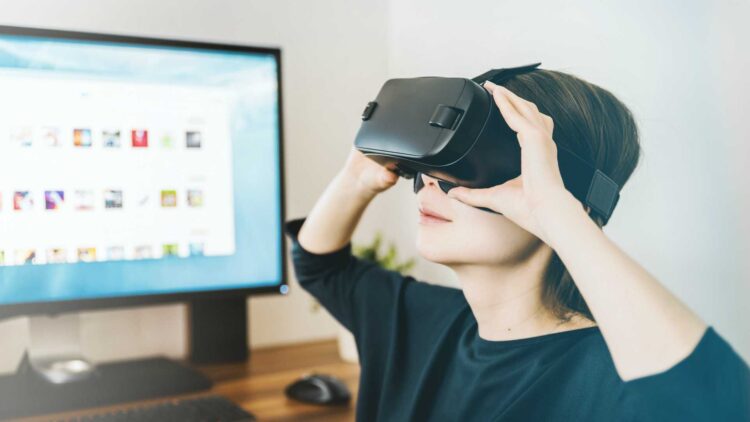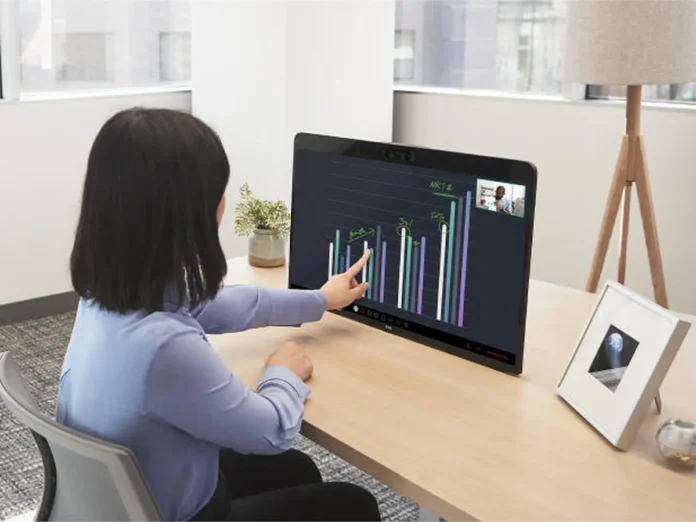In a rapidly changing educational landscape, the evolution of remote learning tools has been nothing short of transformative. From the early days of video conferencing platforms like Zoom to the immersive possibilities of Virtual Reality (VR) technology, the way we teach and learn has undergone a profound shift.
According to a recent report by the International Data Corporation (IDC), the global ed-tech market is projected to reach a staggering $341 billion by 2025, reflecting an annual growth rate of over 16%. This explosive growth is not only a testament to the resilience of the education sector in the face of unprecedented challenges but also highlights the ongoing innovation in remote learning tools that are shaping the future of education.
This article will explore the remarkable journey from Zoom to VR, tracing the key milestones and emerging trends that have reshaped the way we engage with education in an increasingly digital world.
1. The Rise of Video Conferencing

In the early stages of the remote learning revolution, video conferencing tools took center stage as the primary means of virtual classroom interaction. Platforms such as Zoom, Microsoft Teams, and Google Meet experienced explosive growth, especially during the initial phases of the COVID-19 pandemic.
An illustrative example of this surge is Zoom, which witnessed a staggering increase in daily meeting participants, soaring from 10 million in December 2019 to over 300 million by April 2020. This widespread adoption of video conferencing tools not only enabled educators and students to maintain academic continuity but also catalyzed the evolution of educational technology.
Furthermore, when used in tandem with homework assistance platforms like thesis writing help, these video conferencing tools facilitated seamless collaboration, ushering in innovative features like breakout rooms for collaborative group work and screen sharing for dynamic presentations tailored to the educational context.
2. The Challenges of Synchronous Learning
The advent of video conferencing as a core component of remote learning introduced a host of challenges for both educators and students. While synchronous learning promised real-time engagement, it came with its own set of hurdles that demanded creative solutions. ‘Zoom fatigue,’ an affliction characterized by exhaustion stemming from extended video meetings, emerged as a pervasive concern among learners and instructors alike.
Additionally, the reliance on a stable internet connection and access to suitable devices presented formidable obstacles for certain student populations, amplifying disparities in access to quality education.
Moreover, the dynamic nature of virtual classrooms posed unique challenges for educators. Maintaining student engagement and effectively assessing learning outcomes in this digital realm required innovative approaches. As a result, a growing chorus of voices calling for the development of more nuanced and efficient remote learning solutions that would address these multifaceted issues while preserving the benefits of synchronous learning.
3. The Role of Asynchronous Learning

As the challenges of synchronous learning became evident, educators and innovators turned their attention to asynchronous learning options, recognizing their potential to address some of the limitations. Learning Management Systems (LMS) like Moodle and Canvas gained significant traction, in line with the broader trend in edtech, with the global LMS market projected to reach an impressive $22.4 billion by 2027, as reported by the eLearning Industry.
Asynchronous learning introduced a fundamental shift by allowing students to break free from the constraints of real-time schedules. It enabled them to access course materials, assignments, and lectures at their convenience, effectively turning their learning experiences into self-paced journeys.
This approach reduced the stress associated with rigid timetables and catered to the diverse learning styles of a modern, tech-savvy generation. The availability of resources around the clock empowered learners to take control of their education, fostering a more personalized and adaptable approach to knowledge acquisition.
4. Gamification and Personalization
One of the key developments in remote learning has been the integration of gamification and personalized learning experiences. Gamification elements, such as badges, leaderboards, and interactive quizzes, were incorporated to make learning more engaging and fun. According to a study by eLearning Industry, gamified courses have been found to increase learner engagement by up to 60%.
Additionally, the use of AI-driven algorithms enables personalized content recommendations, adaptive assessments, and feedback tailored to individual student needs. These innovations aim to enhance the efficacy of remote education by catering to diverse learning preferences.
5. The Immersive Potential of Virtual Reality (VR)

Asynchronous learning and gamification marked significant progress, but the future of remote education holds even more immersive possibilities with VR technology. Virtual reality enables students to enter virtual classrooms, interact with 3D models, and simulate real-world experiences, from exploring historical sites to conducting complex scientific experiments.
According to Statista, the global VR market is projected to surpass $100 billion by 2027. Educational institutions and ed-tech companies are investing in VR solutions, recognizing the potential to deliver experiential learning that transcends physical limitations.
6. The Accessibility Revolution
Accessibility has been a driving force in the evolution of remote learning tools. The push for inclusive education led to advancements in closed captioning, screen readers, and other assistive technologies, ensuring that remote learning is accessible to all students, including those with disabilities.
The implementation of web content accessibility guidelines (WCAG) became a standard practice to make digital learning materials more inclusive. Additionally, efforts to bridge the digital divide through initiatives like affordable internet access and device distribution have made remote learning more equitable.
7. The Future of Remote Learning

As remote learning tools continue to evolve, the future promises a hybrid educational landscape where traditional and virtual modes of instruction coexist. The integration of augmented reality (AR) and AI-driven virtual tutors is on the horizon, further enhancing the learning experience.
However, challenges like digital security, data privacy, and the need for effective teacher training persist. The key to harnessing the full potential of remote learning lies in striking a balance between technology and pedagogy, ensuring that the tools empower educators and inspire students to explore the limitless possibilities of knowledge acquisition.
Conclusion
The evolution of remote learning tools, from the early days of video conferencing to the immersive potential of VR, has been driven by the pursuit of more effective and engaging educational experiences. While challenges have arisen along the way, the advancements in asynchronous learning, gamification, accessibility, and the integration of emerging technologies have reshaped the landscape of education.
As we navigate the future, it’s clear that remote learning will remain a critical component of modern education, offering both opportunities and challenges that will shape the way we teach and learn for generations to come







